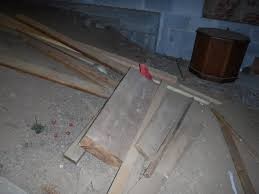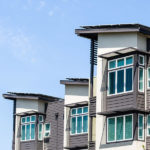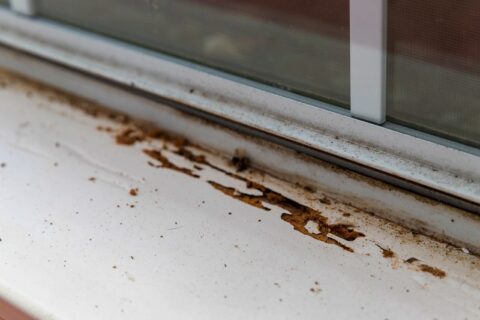Cellulose Debris and the Importance of Removing It from Your Subarea

What do Termites Eat?
If you said wood, you would be right, but only partially. Termites don’t really care about wood, per se, because they’re just trying to get to the tasty, tasty cellulose of the wood. Cellulose is also in a lot of other things, like cardboard, newspaper, and other materials made from wood pulp. So, while you might not have subarea cleaning on your termite prevention to-do list, you need to put it there, because cellulose debris removal is crucial for keeping termites at bay.
What is Cellulose, Anyway?
Cellulose is another word for wood pulp, but it’s also in fruits, vegetables, cereals, and other plants. It is a woody carbohydrate that makes up the cell walls of plants, the most abundant organic compound on earth, and, is often used in human-grade food, as a filler or to boost fiber content on a food label. The cellulose from wood pulp isn’t great for people, but termites love it! They can digest the cellulose in wood pulp because they have special symbiotic microbes living in their digestive tracts. Termites have very strong jaws and can chew through not only wood but also drywall. However, cellulose debris makes an easy meal for them, especially for subterranean termites.
Why is Cellulose Debris Listed on my Inspection?
When a licensed termite inspector performs an inspection of your home, the purpose is to find not only signs of termites but also any sources of termite attraction. This includes wood touching the house, improper moisture control, and, yes, cellulose debris. Cellulose debris removal is crucial to termite prevention, because, by keeping cellulose debris in your subareas, you are basically laying out a termite buffet. What is meant by cellulose debris? Wood scraps and sawdust left under the house in the crawlspace by the builder or after a remodeling project will attract termites, but so will magazines, cardboard, books, papers, and newspapers that are stored in the basement, attic, or garage.
An Exception to the Rule
If you have cellulose insulation in your home, you may be concerned now that you are inviting termites to a feast in your attic. We have good news for you- termites don’t like cellulose insulation. Because this insulation is treated with fire-retardant products, it is repellent to insects, including termites. It is actually a good option for insulation, because it performs well, is energy efficient, and is environmentally friendly.
Getting Rid of Cellulose Debris
We hate to be the ones to tell you this, but it’s time to recycle the National Geographic magazines you’ve been storing in your garage. If they’re old and rare enough, maybe you can sell them on eBay or donate them to a charitable organization! It’s easy enough to get rid of newspapers, and magazines, by recycling. If you have cardboard boxes you’ve been hanging onto in case you need them for a move, give them to someone with a move more clearly on the horizon. If you are storing things in cardboard boxes, transfer them into rubber or plastic containers. This will keep them safe from water damage, as well as prevent infestation by termites and other pests. But what about wood debris? If you have a fallen tree or branches, a stump, or pieces of wood under your house, get rid of these things before they attract termites. Some of this wood can be used for firewood, mulch, compost, or even for erosion control on steep sites in your yard. Use a stump grinder to accelerate stump decay, occasionally adding nitrogen fertilizer to keep the process moving in the right direction. It’s also important to consider structural maintenance when you are assessing sources of wood cellulose on your property. Properly maintaining wooden structures on your property will prevent moisture damage and wood rot, which can make a piece of wood irresistible to termites.
Make Your Home Termite Resistant
Have termite inspections regularly, to assess your vulnerabilities and protect your home from an infestation. In addition to clearing out cellulose debris, it’s recommended that you keep your gutters and downspouts clean and well-maintained, keep wood away from the ground around your house, and never store firewood directly on the ground. If you are building a deck or another structure on your property, look for termite-resistant construction materials like pressure-treated wood, composite wood, or yellow cedar, to help keep your home termite-free. Partnering with a reputable termite control company is the best way to prevent termite infestations and keep your house safe and sound.
Contact MightyMite Termite Services for Help
When you are ready to be proactive about termite control, call the termite control professionals at MightyMite Termite Services to defend your property against termites. At MightyMite, we’ve earned a reputation as experts in California termite control. We perform termite inspections to ensure that your home is free of termites and work hard to help you keep it that way, using treatments that are naturally derived and have a low impact on the environment. We diagnose and treat infestations with the most effective methods and unmatched warranties, solving your termite problems the first time, with an industry-best “no call-back rate.” That, combined with our experience and highly trained, licensed and professional staff, makes us the leading extermination company in the Bay Area. We understand that your home is your most important investment, so we work hard to provide excellent service, utilizing best practices to solve our customers’ termite problems. For more information, email Info@mightymitetermite.com, call us today at 408.335.7053, or contact us through our website.








